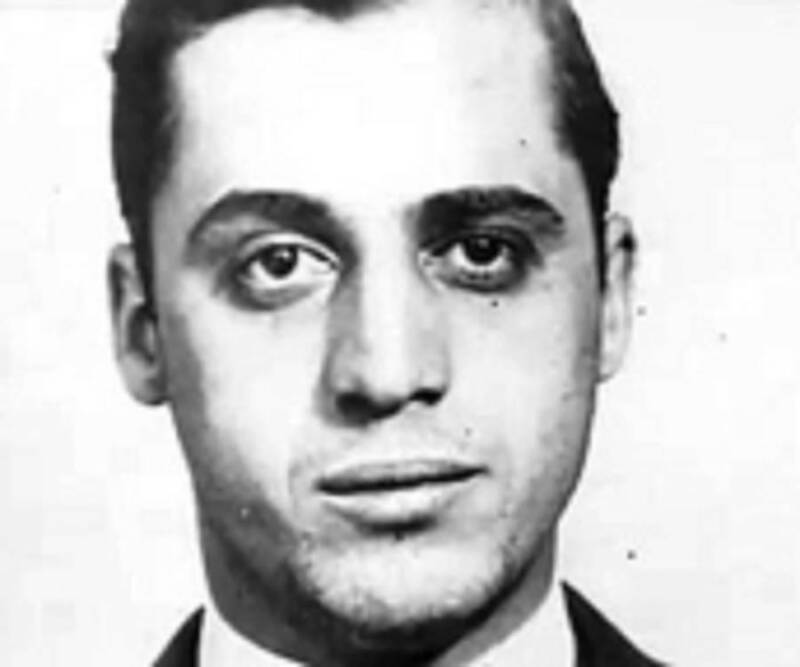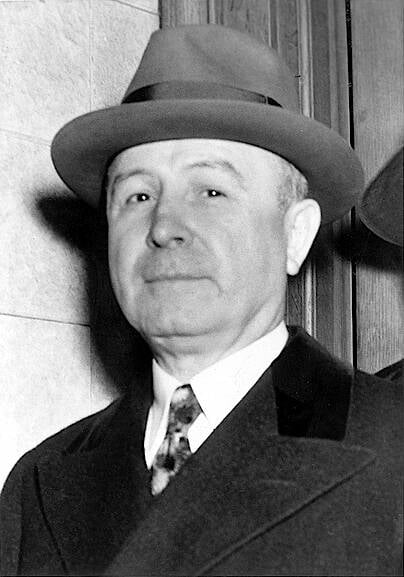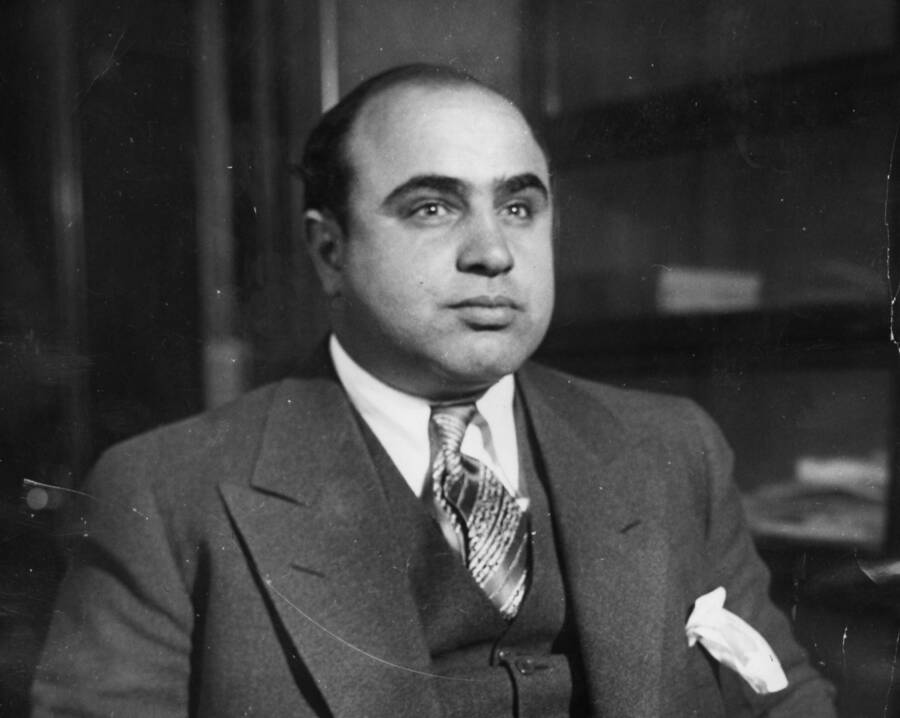Raised in Brooklyn alongside his brother Al, Frank Capone followed mobster Johnny Torrio to Chicago in the 1920s and helped build the city's crime family.

Public DomainThough Chicago mobster Al Capone preached negotiation before murder, his brother Frank Capone said, “You never get no talk back from no corpse.”
Though Al Capone remains one of history’s most infamous mobsters even a century after his blood-soaked reign, little is known to this day about his big brother, Frank Capone.
Al and Frank Capone both slipped into gang life at an early age on the streets of early 1900s Brooklyn, and both followed their mentor Johnny Torrio to Chicago. But once there, Al quickly rose to the top of the underworld in ways that Frank Capone never did.
However, Frank did carve out a criminal legacy all his own, including an attempted takeover of the entire Chicago suburb of Cicero so that he and his associates could continue to rake in untold profits from gambling, brothels, and speakeasies there.
But that takeover attempt would ultimately lead to Frank Capone’s death at the age of just 28 on April 1, 1924. From his ruthless exploits to his blood-soaked demise, this is the little-known story of Frank Capone, the mobster who was much more than just the brother of Al Capone.
Frank Capone And His Brothers Fall Into A Life Of Crime
Born in Brooklyn, New York on July 16, 1895, Frank Capone was the third son of Italian immigrants Gabriele and Teresa Capone. The family got by with little money, and soon enough, Frank Capone got mixed up in gang life with his brothers Al and Ralph.
The Capone brothers were soon associated with the Five Points Gang and one of its rising stars, Johnny Torrio. Quickly, Torrio became something of a mentor to the Capone boys, and when he set out for Chicago, the brothers followed.

Wikimedia CommonsAl Capone and his brother Frank Capone followed in the footsteps of feared mob boss Johnny Torrio.
In 1920, Torrio took charge of the South Side Gang, which became rich and powerful as Prohibition opened up enormous profit streams for those trafficking in illegal alcohol (supposedly, Al Capone’s net worth, adjusted for inflation, was well over $1 billion). As the gang grew in power, Al and Frank Capone were becoming rising stars in their own right.
Which Capone Brother Was The More Ruthless One?
Though stories vary, some say that Frank Capone was the vicious one, whereas Al was more controlled, though others claim it was just the opposite. Supposedly, for instance, Al Capone‘s motto was, “Always try to deal before you have to kill,” while Frank had no such predisposition. He would reportedly say, “You never get no talk back from no corpse.”
Meanwhile, some say that Al was the bloodthirsty one while Frank Capone was the one who presented himself as a distinguished businessman and a proper gentleman, all the better to manipulate others and keep the gang’s illegal empire humming along.

Wikimedia CommonsThe mugshot of Al Capone, the brother of Frank Capone, from the 1930s.
Whatever the truth about how the Capone brothers operated, there’s no question that they helped expand the South Side Gang’s empire. But when they tried to move into neighboring Cicero, Frank Capone met his untimely end.
The South Side Gang’s Attempted Takeover Of Cicero
By 1923, Democrats were mounting a serious charge against Joseph Z. Klenha, the Republican mayor and a puppet of the Capone-Torrio operation.
It was all hands on deck to ensure that the South Side Gang’s interests prevailed in Cicero. The family had been kicked out of Chicago, so it moved its operations to the nearby suburb where it ran speakeasies, taverns, and whorehouses during Prohibition. Klenha supported the open debauchery in defiance of anti-alcohol laws.

Wikimedia CommonsAlso known as “Scarface,” Al Capone was the most infamous mob boss in Prohibition-era America.
On the night before the election, Frank Capone led a team of his gang to the office of Democrat William Pflaum, who was running for town clerk. Capone’s gang roughed him up and destroyed his office.
The police weren’t particularly interested in stopping it, as some officers were likely on Capone’s payroll.
The following day, April 1, 1924, the actual election saw even more turmoil. Frank Capone didn’t want to leave his fortunes to chance. He sent his gang into Cicero to make sure citizens voted for Klenha instead of the opposition candidate.
Anyone who said they were voting for Democrats had their ballot confiscated by one of Capone’s gang. The mobster then marked the ballot for a Republican candidate, returned it to the voter, and then escorted the voter to the ballot box.
Election officials weren’t capable of stopping Frank Capone because they had no weapons or firepower to combat several armed men at polling places. Any officials who spoke up against the gang members were kidnapped until the end of the election while three people were shot to death and another one had his throat slashed.
Capone’s gangs shot one Democratic campaign worker in both legs, took him to a Chicago-area hotel, and eight Democrats joined him to watch over their injured comrade.
The Bloody Death Of Frank Capone

The Polish Museum Of AmericaCook County Judge Edmund J. Jarecki helped organize the squad that ultimately killed Frank Capone on April 1, 1924.
By late afternoon on April 1, citizens of Cicero banded together to save their town. County judge Edmund K. Jarecki deputized 70 Chicago police officers who rushed to the scene. Having dealt with Frank Capone before, Chicago police knew how to effectively confront his gang. Some of them arrived in limousines and unmarked cars to disguise their presence until the last possible moment.
As cars pulled up, Frank Capone wasn’t sure if it was a rival gang arriving. He took no chances.
As soon as the car doors opened, Frank opened fire. His shots missed two officers arriving on the scene. Before Capone could fire again, he was fatally shot at point-blank range.
Al Capone escaped the carnage and would run the family’s empire from this point on. If Frank had waited for the officers to get out of the cars before shooting at them, chances are they would have shot his younger brother as well. Al Capone’s own death wouldn’t come for another two decades, when he finally succumbed to syphilis in 1947.

Public DomainFrank Capone died in a hail of gunfire when he was shot by Chicago police on April 1, 1924.
Despite the bloodshed, the Republicans still won the election.
Frank Capone’s funeral was a massive affair. The gambling joints and whorehouses in Cicero closed for two hours to pay tribute to the elder Capone. Al purchased a silver-festooned coffin for his elder brother and the coffin was surrounded by $20,000 worth of flowers. So many people sent flowers for condolences, the Capone family needed 15 cars to carry them to the cemetery.
Even more bizarrely, the police officer who fired the fatal shot made an appearance at the funeral and expressed his sympathy.
The Capone operation was so entrenched in Chicago in 1924 that Frank Capone’s funeral was lavish enough for an elder statesman. Though his reputation was soon overshadowed by that of his brother the notorious mob boss, Frank Capone was indeed once a powerful figure on the streets of Prohibition-era Chicago, even if his name no longer rings out like it once did.
After this look at Al Capone’s brother Frank Capone, learn about Al Capone’s wife Mae Capone. Then, read about Al Capone’s son Albert Francis Capone.





